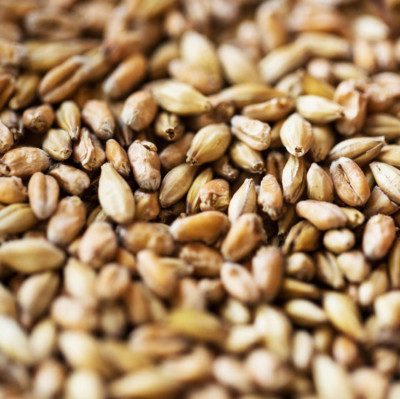How does it work?
The particle size index (PSI) is a physical test that determines the relative hardness of wheat classes by grinding and sieving. Data obtained from this test can be converted to relative hardness via a standard calibration chart.
According to AACC International Official Method 55-30.01 (Cereals & Grains Association), the PSI test requirements include:2
- Equipment
- Lab mill fitted with No. 2 (fine) burr, revolving at 3,500 ± 100 rpm.
- Screen or sieve, U.S. Standard No. 200 with 75 µm opening, fitted with lid and bottom pan.
- Sieve shaker
- Balance (electronic)
- Sample preparation
- Only cleaned wheat kernels should be used
- Thoroughly pre-blend wheat kernels
- Moisture content must be 11–13%
- Drying of sample should be carried out if wheat moisture is greater than 14%
- Method
- Adjust mill to its finest setting (burrs should be barely touching each other)
- Mill 23 g of wheat into meal.
- Tare bottom receiving pan.
- Weigh approximately 10 g of meal.
- Transfer to U.S. No. 75 sieve (pan previously fitted to sieve)
- For proper sieving, add 50 g whole wheat kernels or six plastic sieve cleaners; cover and sieve for exactly 10 min on sieve shaker.
- Brush any fines adhering to bottom of sieve into bottom receiving pan and reweigh to obtain weight of throughs (W).
- PSI (%) = (W/Sample weight) × 100
- Relative hardness scale
| Category | PSI (%) |
| Extra hard | Up to 7.0 |
| Very hard | 8.0–12.0 |
| Hard | 13.0–16.0 |
| Medium hard | 17.0–20.0 |
| Medium soft | 21.0–25.0 |
| Soft | 26.0–30.0 |
| Very soft | 31.0–35.0 |
| Extra soft | Over 35.0 |
As can be seen from the above table, hard wheats are characterized by lower PSI values while soft wheats have higher PSIs. As PSI increases, the particle size of the flour (or granulation) decreases. Hard wheats are more difficult to grind than soft wheat kernels which readily break into smaller pieces.
Application
Wheat hardness is key for bakers and millers. The following table shows the relationship between class, protein content, kernel hardness, and application of wheat:
| Kernel Hardness | % Protein | Wheat Class | End-Product Utilization |
| Soft | 7.0–8.5 | Soft wheat | Cake |
| Soft | 7.2–9.5 | Soft wheat | Cookies |
| Medium soft / medium hard | 8.0–10.5 | Soft wheat and hard winter | Doughnuts |
| Medium soft / medium hard | 8.5–12.5 | Soft wheat and hard winter | All purpose flour |
| Medium soft / medium hard | 7.5–11.0 | Soft wheat and hard winter | Crackers |
| Medium soft / medium hard | 9.5–10.5 | Hard winter | Noodle |
| Medium hard | 10.5–12.5 | Hard winter | Flat bread |
| Hard | 11.5–14.0 | Hard winter
Hard spring |
White pan bread |
| Extra hard | 12.5–15.0 | Hard spring
Durum wheat |
Pasta |
| Very hard | 13.5–15.5 | Hard spring
Durum wheat |
Hearth bread |
| Very hard | 13.5–16.0 | Hard spring
Durum wheat |
Whole wheat bread |
Factors that affect PSI
- Water content of kernel
- Milling device type and configuration / milling intensity
- Vitreousness and starchiness of kernel
- Starch-protein interaction
- Wheat class
Hardness, PSI and baking quality
The hardness of wheat kernels, a measure of their physical resistance to crushing or shear forces, is directly correlated with:
- Gluten-starch interaction
- Extraction rate (ER)
- Mean particle size after milling (further grinding is needed to attain final granularity)
- Force required and energy consumption during wheat milling into flour
- The amount of damaged starch and flour protein content
- Flour water absorption capacity
- Susceptibility of flour to amylase action
- Breadmaking performance of flour
- Mixing time
References
- Carson, G.R., and Edwards, N.M. “Criteria of Wheat and Flour quality.” Wheat Chemistry and Technology, 4th edition, AACC International, Inc., 2009, pp. 97–118.
- AACC International. Approved Methods of Analysis, 11th Ed. Method 54–40.02. Mixograph Method. Final approval November 8, 1995; Reapproval November 3, 1999. Cereals & Grains Association, St. Paul, MN, U.S.A.

